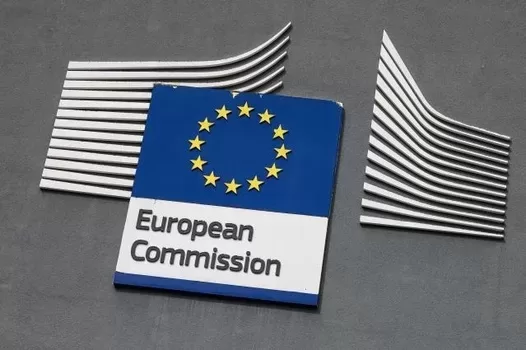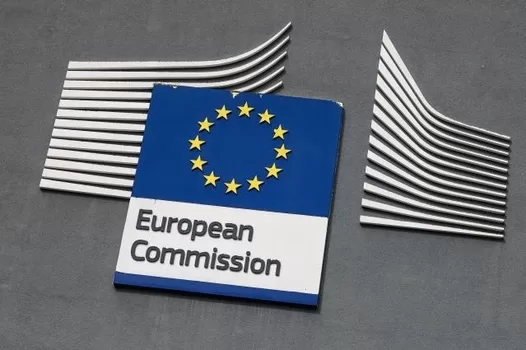Europe’s continued reliance on biomass burning undoes EU climate credentials
The European Parliament’s decision to retain subsidies for burning forest biomass for energy tarnishes the EU’s reputation of leadership on renewable energy as it ignores recommendations of the Parliament’s own environment committee and entrench reliance on this highly emissive and environmentally destructive substitute for fossil fuels.
This decision may be entrenched in forthcoming trialogue deliberations to finalise the RED 2 decision.
Peg Putt, coordinator of the Forest Biomass Working Group of the Environmental Paper Network said:
“Europe is no longer an example to be followed as it continues to make 60% of its so-called “renewable” energy from biomass and biofuels, which is not low emissions energy at all. Alleged benefits of burning forest biomass are illusory and actually exacerbate climate change, which has been amply demonstrated by many scientists but roundly ignored.”
Peg Putt, Environmental Paper Network
Europe relies on flawed carbon accounting conventions to look good by not counting the emissions of combustion of wood in the energy sector, unlike those for fossil fuels which do appear in those carbon accounts.
Then the EU subsidises burning wood to encourage its use, even though it emits more GHGs per unit of energy than does burning coal.
Subsidies to burning forest wood also undermine subsidies to genuinely low emissions technologies like solar and wind energy.
“In the case of the huge imports of wood from outside Europe, the EU will not take any responsibility at all for the emissions of combustion of forest biomass for that energy production in Europe, which is instead offshored to the producing country who must take responsibility for Europe’s apparently decreasing emissions.
If the imports are from the forests of the global south, as they increasingly will be, this is Europe practising climate colonialism”
Peg Putt said.
Meanwhile Europe’s own forests are also plundered for biomass burning, running down the carbon storage and sink capacity of those forests and destroying biodiversity just when these forests are needed more than ever to keep carbon out of the atmosphere and to maintain our collapsing natural diversity.
A forest of loopholes undermines the claims to have restricted subsidies for burning primary forest biomass and subsidies for electricity-only power plants.
“We will call Europe out on the world stage at COP 27 for this epic fail. This is bad faith pretence at climate action that is making things worse in this time of crisis.
We will urge a change to the flawed carbon accounting rules of the UNFCCC for forest biomass that enable and drive this environmentally destructive climate deception”
Putt said.
Our feature series on Native Forest logging for electricity:
1. Native forest protections are flawed, logging laws value industry over environmental protection
2. Koalas & Great Koala National Park: NSW Election 2023
3. Native forest logging CO2 emissions is greater than domestic aviation
°°°°
A group of European and US scientists sent an open letter to EU decision-makers in 2018, warning that a planned increase in harvesting levels of forests for bioenergy use risk having a negative impact on the climate.
This letter is a shorter version of an open letter signed by 190 scientists from the EU and US. The full letter and list of signatories can be downloaded here.
Update: On 14 July 2021, the European Commission adopted a series of legislative proposals setting out how it intends to achieve climate neutrality in the EU by 2050
Emissions of biomass used in energy will be recorded and accounted towards each Member State’s 2030 climate commitments, through the correct application of accounting in LULUCF.
As forest management is the main source of biomass for energy and wood production, more robust accounting rules and governance for forest management will provide a solid basis for Europe’s future renewables policy after 2020.
Open letter to EU decision-makers in 2018
We, the undersigned, would like to express our grave concern over the scientific basis of recent political developments on the LULUCF Regulation and sustainability criteria for biomass in the Renewable Energy Directive. We urge you to support the highest integrity of these two strongly interlinked dossiers in order to ensure they deliver on the EU’s global commitments to mitigate climate change and halt biodiversity loss.
The LULUCF policy regulates the inclusion of greenhouse gas emissions and removals from land use, land use change and forestry into the 2030 climate and energy framework. A critical feature of the LULUCF Regulation is how the forest reference level for Member States will be specified.
The promotion of an increase in active forest management encourages increased harvest levels in order to substitute fossil-derived fuels and products with wood and bioenergy without accounting for their full climate impacts.
This approach risks having adverse effects on climate, biodiversity and resilient ecosystems by emitting more greenhouse gases, influencing biophysical processes and causing additional habitat loss – accumulating evidence suggests that the proposed strategy risks being counterproductive.
Increased harvesting levels have a negative impact on the climate because the standing forest carbon stock is immediately reduced when the forest is harvested. It may take decades to centuries until the former level of the carbon stock is restored by regrowth.[i],[ii]
About 60% of the wood in Europe is used for (short-lived) energy and pulp[iii], where much of the carbon is released immediately.
Harvesting also leads to other greenhouse gas emissions, and influences the climate via biophysical processes such as albedo, evapotranspiration, forest structure and cloud-formation.[iv],[v],[vi]
The forest reference levels should constrain the Member States’ ‘business as usual’ utilization of forest resources. Without such regulation the emission levels of certain Member States will increase, possibly even further triggered by subsidies for bioenergy.[vii]
If Member States include future policies in their reference level, they will be able to increase forest bioenergy production without fully accounting for its emissions.
The forest reference levels should therefore exclude all policies from 2009, since the introduction of the Renewable Energy Directive, to ensure all emissions from increased harvests for bioenergy are accounted for.
Honest accounting of the climate impacts of forest use in the LULUCF Regulation would also stimulate carbon is captured in wood products that live longer, such as for construction, where wood can replace the use of high-carbon materials such as steel and concrete.
In general, reduced production and consumption patterns are necessary to mitigate climate change. Environmental impact assessments including life-cycle -and cost-benefit analyses of forest management and forest products should determine how to utilise forest resources sustainably.
Bioenergy from forest biomass is not carbon-neutral and can have seriously negative climate impacts. The combustion of forest biomass generally releases more carbon dioxide to the atmosphere than fossil fuels, because of the lower energy density and conversion efficiency of biomass (more has to be burnt relative to fossil fuels).[viii],[ix],[x],[xi]
It is therefore important for the EU’s renewable policy to exclude the use of biomass feedstocks with long pay back times for energy, because these are unlikely to make an effective contribution to meeting the Paris Agreement target to limit global warming to well below 2 degrees and aspire to 1.5 degrees.
In the face of climate change more resilient forests are needed. Forest management methods have led to an increase in homogeneous forests, making them more vulnerable to the effects of climate change.
Natural forest ecosystems, with a diversity of species, show a greater resilience and provide a higher number of ecosystem services, such as biodiversity protection and carbon storage. [xii],[xiii],[xiv],[xv]
Management strategies, such as continuous-cover silviculture or management to enhance mixed evergreen deciduous stands, can enhance the multi-functional role of forests.
Urgent action is needed in combating the threats of climate change and biodiversity loss.
The EU needs to set an evidence-based precedent on the implementation of Paris Agreement and consider large-scale impacts on forests and the multi-functionality of forests.
To ensure emissions from forestry are mitigated and correctly accounted, we urge the EU to:
LULUCF Regulation
- Ensure policies from 2009 are not included in forest management reference levels to ensure emissions from bioenergy are accounted.
- Climate impacts of forests are fully accounted for to incentivise using wood in long-lived harvested wood products and standing forests.
- Promote maintenance of and increase in the EU forest sink; the EU should make an assessment on how forests can safely and sustainably contribute to increasing climate ambition.
- Deforestation is actively discouraged.
Renewable Energy Directive (recast)
- Introduces effective sustainability criteria for the use of forest biomass for energy.
- Restricts the use of feedstocks with long pay-back periods, such as roundwood.
We further encourage Member States to assess the potential impacts of the implementation of the EU’s climate policies on biodiversity, and on the objectives under the EU Biodiversity Strategy and the Birds and Habitat Directives.
***
OPEN LETTER TO:
The Estonian Presidency of the Council, the Environment Council, the Transport, Telecommunications and Energy Council
CC: Miguel Arias Cañete, Commissioner Climate Action & Energy;
Norbert Lins, Member of the European Parliament (Rapporteur LULUCF Regulation);
José Blanco López, Member of European Parliament (Rapporteur, Renewable Energy Directive (recast) Energy Committee);
Bas Eickhout, Member of the European Parliament (Rapporteur, Renewable Energy Directive (recast), Environment Committee)
[i] Bellassen V. and Luyssaert S. (2014). Managing forests in uncertain times. Nature 506, 153–155.
[ii] Sievänen R. et al. (2014). Carbon stock changes of forest land in Finland under different levels of wood use and climate change. Annals of Forest Science 71, 255–265.
[iii] Mantau U. (2012). Wood flows in Europe (EU27). Project report. Commissioned by Confederation of European Paper Industries (CEPI) and European Confederation of Woodworking Industries (CEI-Bois).
[iv] Ellison D. et al. (2017). Trees, forests and water: cool insights for a hot world. Global Environmental Change 43, 51–61.
[v] Jackson R. et al. (2008). Protecting climate with forests. Environmental Research Letters 3, 44006.
[vi] Pielke R. et al. (2002). The influence of land-use change and landscape dynamics on the climate system: relevance to climate-change policy beyond the radiative effect of greenhouse gases. Philosophical Transactions of the Royal Society of London A 360, 1705–1719.
[vii] EASAC (2017). Multi-functionality and sustainability in the European Union’s forests. EASAC policy report 32.
[viii] Ståhls M. et al. (2011). Impacts of international trade on carbon flows of forest industry in Finland. Journal of Cleaner Production 19, 1842–1848.
[ix] JRC (2013). Carbon accounting of forest bioenergy. European Commission, Joint Research Centre – Institute for Energy and Transport.
[x] Smyth C. et al. (2016). Climate change mitigation potential of local use of harvest residues for bioenergy in Canada. GCB Bioenergy.
[xi] Soimakallio S. et al. (2016). On the validity of natural regeneration in determination of land-use baseline. International Journal of Life Cycle Assessment 21, 448–450.
[xii] Balvanera P. et al. (2013). Linking biodiversity and ecosystem services: current uncertainties and the necessary next steps. BioScience 64, 49–57.
[xiii] Gamfeldt L. et al. (2013). Higher levels of multiple ecosystem services are found in forests with more tree species. Nature Communications 4, 1340.
[xiv] Tilman D. et al. (2014). Biodiversity and ecosystem functioning. Annual Review of Ecology, Evolution and Systematics 45, 471–93.
[xv] Holm, S-O. (2015). A Management Strategy for Multiple Ecosystem Services in Boreal Forests. Journal of Sustainable Forestry 34 (4): 358-379.





